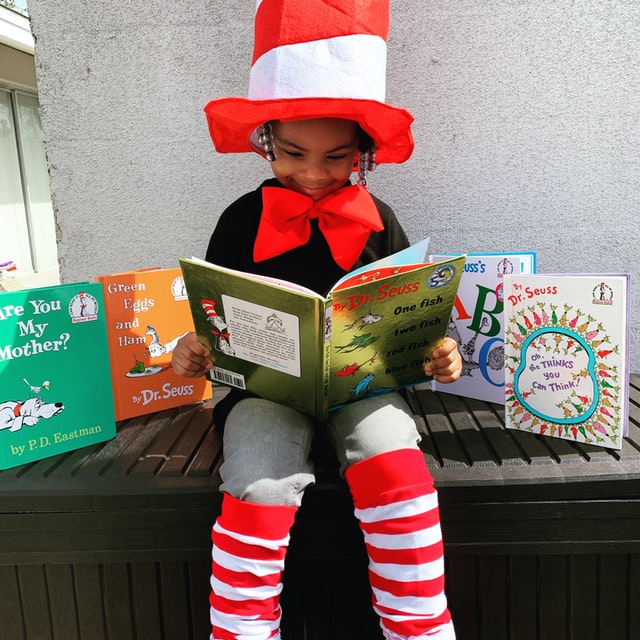Diversity makes great teams, great content, and great education
The issue is entirely pervasive and has been described as a virus in itself, one with an incredibly enduring lifetime.
This year continues to bring to light racial inequalities in our world, from the racial profiling of individuals like athletes and politicians to the tragic deaths of people of colour in police custody. Existing economic and social gaps between disadvantaged and advantaged groups have further widened due to the pandemic. The issue is entirely pervasive and has been described as a virus in itself, one with an incredibly enduring lifetime.
The CMC’s Opening Keynote Panel discussed the Black Lives Matter movement and its implications for the children’s media audience and industry. However, the panel’s most impressing points also hold true for education and the wider publishing industry.
“I hope that children’s media can be a force for giving the upcoming generation, children and young people, a chance to have agency as a positive force for change.”
Larissa Kennedy
The panel, comprising the BBC Head of Creative Diversity Miranda Wayland, NUS President Larissa Kennedy, Azoomee’s Adam Campbell, Professor of Learning Technologies Kevin Clark, and Co-founder of the BAME TV Task Force Jacqueline Baker, had many positive things to say about the progress made by Black Lives Matter and the impact it has had in instigating change, particularly amongst young people.
If everyone put a fraction of Nandi’s energy into improving equality, we might start to see those gaps really close up.
The session was in fact begun by Nandi Bushell, a 10-year-old Changemaker and drummer-extraordinaire. Nandi gave us a taster of how she is using music to promote equality and support Black Lives Matter. If everyone put just a small fraction of that same energy into improving equality, we might start to see those gaps really close up.
Breadth of representation
I’ve already mentioned the role of children’s media in teaching cultural values in this series. With this arises the question of representation. As Adam Campbell says “everyone deserves to see themselves represented in media”, not just the cultures of the content creators. Kevin Clark explained that even when minority groups are represented, the diversities within a single group may be overlooked. These groups are often very broad, being based on a high-level geographical area or skin colour, where, as Jacqueline pointed out, one black person may have West-Indian heritage and another Nigerian, and their histories and customs are incredibly different. Reflecting that breadth of culture and diversity is a further step that is still needed.
“Everyone deserves to see themselves represented in media”
Adam Campbell
Reflecting cultural diversity and different histories have also been in the spotlight recently when thinking about changes to the curriculum and, in particular, teaching about colonialism. Britain is a multicultural state, and there is a need for schools to teach about those different cultures in order to foster respect and understanding. Children’s media, publishing and games similarly need to champion diversity and work to educate and empower children from all backgrounds by producing inclusive content.
Diversity makes great teams
Diversifying teams will help provide an authentic voice to content.
One way of ensuring that diverse cultures and experiences are represented is to amplify those voices during the creation process. Culture has to be considered in all its multifaceted glory, and this is not just down to what is represented, but also who is creating and reproducing it. Consumers are producers, and several of the panellists pointed out that diversifying teams will help provide an authentic voice to content.
“One of the things that is crucial … is the importance of having gatekeepers and ensuring that those who are creating content at different levels – whether that’s someone who’s on-screen, off-screen, editorial teams, commissioners – that they also reflect the different communities that are in the UK.”
Jacqueline Baker
This is true of all walks of life; including different perspectives makes teams stronger. Different perspectives offer new solutions and may even open up new markets for content producers.
If a class made of primarily black students has only white teachers, then that path may not appear as an option for them.
This applies to children too: ‘seeing yourself’ in a role model can have a powerful effect on an individual’s aspirations and can open up new prospects. Such inclusion or exclusion of certain voices presents the cyclical challenge of representation. If in a book or TV show there is only a tokenistic representation of a minority group, a child from that background may feel limited to fit that representation. If a class made of primarily black students has only white teachers, then that path may not appear as an option for them.
BLM in education and publishing
Inclusion or exclusion of certain voices presents the cyclical challenge of representation.
Lack of diversity is a particular issue for both the teaching and publishing professions. Teaching, and particularly the role of headteacher, is overwhelmingly white British in UK state schools – even in schools where the vast majority of students are from BAME backgrounds. Similarly, the Publishers Association’s Diversity and Inclusion Survey continues to highlight the difference in industry levels of representation compared to those of the UK population. The list goes on: the recent Rethinking ‘Diversity’ in Publishing report highlights in particular how diverse audiences are not adequately represented or valued.
If we had more inclusion of diverse backgrounds within these professions, as well as in the content they create and culture they reproduce, I wonder how many more traditionally disadvantaged individuals might aspire to be writers, teachers, filmmakers, or any one of the myriad characters they see on screen and in the pages of books.
The CMC
The Children’s Media Conference is the UK’s largest gathering of children’s media experts and enthusiasts, drawing a crowd from children’s TV and film, radio, gaming, publishing, and tech. This year, Oriel Square’s Hannie Kirkham produced a session for the CMC’s Learning Strand, focusing on the ways in which brands have responded to the Covid-19 lockdown and what that has meant for their educational content and engagement.
The Conference, usually hosted across several venues in Sheffield, has honed the balance of insightful panels, collaboration opportunities and a good dose of fun. Although this year has forced the production team to migrate the conference online and explore a whole new way of working, they have still managed to incorporate all of those elements. This year’s content was also thoroughly relevant to current events and ongoing issues that are so prevalent for young people.
If you’re interested in finding out how Oriel Square can deliver or help you plan effective and engaging online conferences, training sessions, events or communities, please get in touch. You can find us on Twitter, Facebook and LinkedIn @OrielSquare.

